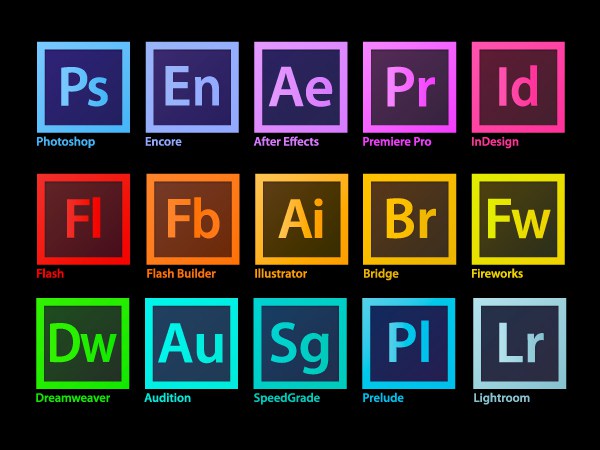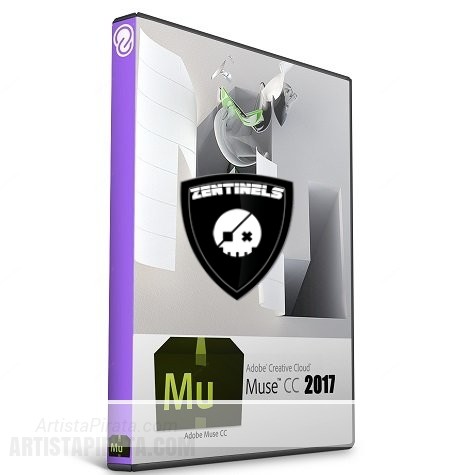- Nov 03, 2016 Adobe Muse CC 2017.0.0149 – Design and publish HTML websites without writing code. November 3, 2016 Adobe Muse 2017 enables designers to create websites as easily as creating a layout for print.
- The 2017 release of Adobe Muse CC (August 2017) brings in several enhancements, including support for responsive forms, slideshows and compositions, direct selection of sub-elements, Pinch to Zoom, and much more. Read on to know more about the new features, and links that offer more learning resources.
- Adobe Muse CC makes it easy for designers to make websites with free-form layouts that. Create and publish beautiful responsive websites — no coding required.
Adobe Muse Cc 2017 Portable
| Developer(s) | Adobe Systems |
|---|---|
| Initial release | May 7, 2012 |
| Stable release | CC 2018 (2018.1.0.266)[1] / April 4, 2018; 3 years ago |
| Written in | Flash, Flex, AIR |
| Operating system | OS X and Windows |
| Available in | 19 languages[2] |
American English, British English, Brazilian Portuguese, Czech, Danish, Dutch, Finnish, French, German, Italian, Japanese, Korean, Norwegian, Polish, Russian, Spanish, Swedish, Traditional Chinese, Turkish | |
| Type | Website builder |
| License | Trialwaresoftware as a service[3] |
| Website | muse.adobe.com |
Scroll the list of programs until you locate Adobe Muse CC 2017 or simply activate the Search feature and type in 'Adobe Muse CC 2017'. If it is installed on your PC the Adobe Muse CC 2017 application will be found automatically. After you select Adobe Muse CC 2017 in the list, some information regarding the program is made available to you. Buenas, les traigo un nuevo video de como descargar e instalar adobe muse CC 2017 Totalmente gratisADOBE MUSE Crea y publica sitios web adaptativos y especta.
Adobe Muse is a discontinued offline website builder used to create fixed, fluid, or adaptive websites, without the need to write code.[4] It generates static pages, but does not manage hosting. Users can add more advanced functionality such as blogging and eCommerce to their website with plugins created by third-party developers. This application is available to download through Adobe's Creative Cloud subscription. Technical support for Muse ended on March 26, 2020. The final feature improvement release was made available on March 26, 2018.[5][6]
Overview[edit]
Themes[edit]
Adobe Muse themes are created inside Adobe Muse and shared as a .muse file. Themes do not require any configuration or setup to get running. Since Adobe Muse generates static HTML files, the files can be exported to the browser for testing without needing to be hosted. Because of its static nature, however, themes cannot be applied to existing content and content cannot be imported into a theme. Since themes are created inside Adobe Muse, they do not require knowledge of any code. Free starter designs are offered on Adobe Muse.[7] Themes can be viewed via a built in 'Preview' option that allows users to preview their website in the application. Users can also temporarily host their website in Business Catalyst for free as part of the Creative Cloud subscription.
Widgets[edit]
Adobe Muse widgets are written in an XML format called MuCow (Muse Configurable Options Widget).[8] Widgets are placed onto a Muse canvas and their content is embedded directly into the HTML of the site. Widgets have made it possible for Muse users to add blogs, eCommerce, animations, etc. to a Muse website.
History[edit]
When Muse was initially created in May 2012, it was made to generate websites for 3 types of devices (Desktop, Tablet, and Mobile). Using viewports and redirects, a Muse website users would access a site that was built specifically for their generic device type. In May 2012, fluid design was just beginning to be used mainstream. After years of requests, Muse was made capable to build fully responsive content in its 2015.1 release.
Release history[edit]

| Version | Released | Improvements included |
|---|---|---|
| 1 | May 7, 2012 | Initial release[9] |
| 2 | August 20, 2012 | Built-in contact forms, auto generated sitemaps, auto generated navigation, faster loading times, and ability to attach files[10] |
| 3 | December 11, 2012 | Enhanced code quality, html5 animations, and mobile layout options[11] |
| 4 | February 26, 2013 | Spelling checker, export options, and code quality[12] |
| 5 | June 17, 2013 | In-browser editing, scroll effects, and layers panel[13] |
| 6 | August 13, 2013 | Parallax scrolling[14] |
| 7 | November 13, 2013 | Ability for developers to create 3rd-party widgets, social media widgets, and full-screen slideshows.[15] MuseWidgets.com[16] was created as the official source for Adobe Muse widgets. |
| 2014 | June 18, 2014 | A complete software rebuild with 64-bit support, in-app preview, and HiDPI support[17] |
| 2014.1 | August 13, 2014 | Self-hosted web fonts, bullet and numbered lists, and reCaptcha integration[18] |
| 2014.2 | October 6, 2014 | SVG import, text synchronizing across desktop and mobile, secure FTP support, and find and replace[19] |
| 2014.3 | February 11, 2015 | Usability and performance improvements, show and hide frame edges, secure FTP auto-detection, and HiDPI support for Windows[20] |
| 2015 | June 15, 2015 | Adobe Stock integration, Typekit integration, and contact form updates[21] |
| 2015.1 | February 8, 2016 | Free-form responsive web design, customizable starter designs, and integrated with Adobe Stock[22] |
| 2015.2 | June 20, 2016 | Better collaboration with libraries, asset collector, and improved Illustrator workflows[23] |
| 2017 | November 4, 2016 | Support for animations through CC Libraries, power zoom functionality, and support for Google reCAPTCHA version 2 |
| 2018 | March 26, 2018 | Final release |
See also[edit]
References[edit]
- ^'Adobe Muse Release Notes'. Retrieved October 19, 2017.
- ^'Adobe Muse FAQs'. Retrieved August 30, 2016.
- ^'Creative Cloud plans'. Retrieved August 30, 2016.
- ^'Muse Homepage'. Archived from the original on February 12, 2012. Retrieved January 23, 2012.
- ^'End of service for Adobe Muse'. Retrieved May 15, 2018.
- ^'As Adobe continues to re-focus on developing products and solutions that provide our customers with the most value, we are now announcing the end of new feature development for Adobe Muse CC.' - Adobe Muse Product Announcement email, March 26, 2018.
- ^'Tutorials'. Adobe Muse Widget Directory. Archived from the original on October 29, 2017. Retrieved July 6, 2017.
- ^'MuCow Documentation'. Retrieved April 7, 2017.
- ^'Adobe Muse release 1'. Retrieved November 28, 2015.
- ^'Adobe Muse release 2'. Retrieved November 28, 2015.
- ^'Adobe Muse release 3'. Retrieved November 28, 2015.
- ^'Adobe Muse release 4'. Retrieved November 28, 2015.
- ^'Adobe Muse release 5'. Retrieved November 28, 2015.
- ^'Adobe Muse release 6'. Retrieved November 28, 2015.
- ^'Adobe Muse release 7'. Retrieved November 28, 2015.
- ^'MuseWidgets'. Retrieved November 28, 2015.
- ^'Adobe Muse 2014'. Retrieved November 28, 2015.
- ^'Adobe Muse 2014.1'. Retrieved November 29, 2015.
- ^'Adobe Muse 2014.2'. Retrieved December 27, 2015.
- ^'Adobe Muse 2014.3'. Retrieved December 28, 2015.
- ^'Adobe Muse 2015'. Retrieved December 28, 2015.
- ^'Adobe Muse 2015.1'. Retrieved August 11, 2016.
- ^'Adobe Muse 2015.2'. Retrieved August 11, 2016.
External links[edit]
Adobe Muse is no longer adding new features and will discontinue support on March 26, 2020. For detailed information and assistance, see Adobe Muse end-of-service FAQ.
You can download Muse from the Creative Cloud apps catalog. You'll need to sign in with your Adobe ID and password to complete the download. For more information, including how to install older versions or check for updates, see Download your creative cloud apps.
For solutions to a 'failed to install' error, see Error: 'Failed to install' Creative Cloud desktop app. To resolve other download, installation, and update issues, see this download and install troubleshooting guide.
Yes! You can download trial versions of any Creative Cloud app, including Muse, from the Creative Cloud apps catalog. You'll need to sign in with an Adobe ID and password to download a trial. For detailed instructions, see Download and install a Creative Cloud trial.
Read these simple solutions to common Adobe ID and sign in issues to regain access to your account.
You can install Muse and other Creative Cloud apps on up to two computers. If you want to install it on a third computer, you'll need to deactivate it on one of your previous machines. Learn how to sign in to your Adobe apps to activate them.
Still need help? Find more download and install solutions.
Sign in to your Adobe accounts page with your current Adobe ID and password. From there, click the Security & Privacy tab, and then click Change under Password. For more information on changing your password and other account information, see Manage your Adobe ID account.
Follow these Update your credit card and billing information.
Switching Creative Cloud plans is easy. Follow these step-by-step instructions to upgrade or change your plan.
Converting your trial to a paid membership is easy. Follow these step-by-step instructions to upgrade and start your membership.

If you stop your membership, you still have access to Creative Cloud member free benefits and any files you saved to your device. You won't have access to apps or most services and your cloud storage will be reduced to 2 GB. Learn how to Cancel your Creative Cloud membership and understand the Adobe subscription terms.
Still need help? Find more account, billing, and plan answers.
Follow this comprehensive tutorial to learn how to create a responsive website from scratch. For a shorter introduction to designing a responsive web page, watch this video tutorial.
It's easy to add breakpoints using the breakpoint bar.
The layout and the content of your website should determine how and where you add breakpoints. To learn more about adding breakpoints to a responsive site, see Getting started with responsive design in Adobe Muse.
This video tutorial shows how to add visual interest to your responsive web pages with scroll effects.
You can use the responsive design features in Muse to design websites that display correctly on all devices. You can also create an alternate layout for mobile-only sites.

Use the Contact Form widget to easily add a contact form to your website.
A Composition widget allows a user to interact with one part of the page to change the content displayed in another area. Learn more in this article on adding Composition widgets.
Learn the key concepts for adding scroll effects in this overview article. Then, learn how to apply scroll effects to browser or background fill images.
Learn how to use iframe tags to embed video on a web page.
Follow these easy steps to learn how to add anchor links to a page.
Watch this short video tutorial to understand planning considerations for setting up a new site in Muse. Then, follow this step-by-step tutorial to create your first website.

Learn how to use FTP (File Transfer Protocol) to publish your Muse site to a third-party web hosting provider.
Learn how to use the Publish workflow to host your finished site on Adobe Business Catalyst.
Community

Adobe Muse Cc Download
Join the conversation.
Adobe Muse Cc 2017 Free Download
- Mobile
